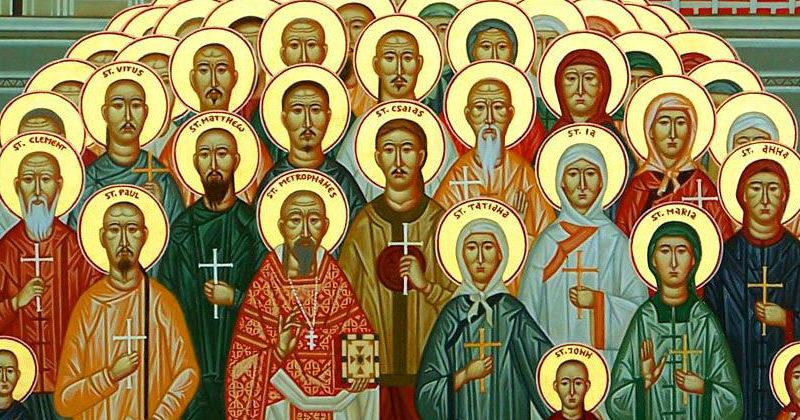Saint Augustine Zhao Rong and his companions are known as the Chinese Martyrs. They are what is called a representative group of 120 Chinese martyrs who were canonized by Saint John Paul II in 2000. They did not all live at the same time. Their ‘leader’, Saint Augustine Zhao Rong, was martyred in 1815, but the greatest number of the 120 were martyred in 1900 during the Boxer Rebellion. Wikipedia provides a full list of the martyrs here. At the same time we should not forget the other Christians who also suffered in similar persecutions. The numbers of those killed in the Rebellion will probably never be known, but it runs into many thousands.
The list of canonised Chinese martyrs ends in 1930, but that of course is by no means the end of the story. With the rise of the Communist party in China, persecution of Christians took on a whole new impetus. One of the first actions of Chairman Mao was to expel all foreign missionaries; this is something that the Chinese authorities have kept up since then, for there was a recent batch of expulsions only last year.
As for the number of Christians of all confessions who perished in the Cultural Revolution, that cannot be known either. Again it must run into the thousands. While the excesses of the Cultural Revolution, which may have led to the premature deaths of several million Chinese, ceased with the death of Chairman Mao, and the subsequent arrest of his wife, this did not mean a let up in state disapproval of religion. Far from it. Moreover, even with China’s economic modernization, now surging ahead more than ever, religious intolerance has increased of late.
Ironically, it is this shift to economic liberalism coupled with political repression that has led to the growth of Christianity in China. According to the Council on Foreign Relations:
"Experts reference two historical events as drivers of China’s religious awakening. Deng Xiaoping’s opening and reform policy changes triggered a religious revival in the 1980s, with Christianity first spreading in house churches formed in rural areas. The second major event was the crackdown on democracy activists in Tiananmen Square in 1989. This marked a major turning point for urban communities; intellectuals who had hoped to promote democratic ideals as an alternative to Maoist thought pivoted to religious practice—to Daoism, Chinese Buddhism, and eventually Christianity."
In the current climate there is no reason to suppose that the Christian faith will not continue to grow, in part because of its inherent liveliness and in part to the unwitting helping hand the Communist Party gives it through its persecutions that spring from a misdirected sense that it represents a political threat.
In the meantime, we should remember the Chinese Christians of today, faced as they are with many difficulties and obstacles placed in their way by the state. We should learn from the lesson they present: we should learn from their courage, their fortitude and their faithfulness to the truth. And we should do something else as well – looking at the Chinese Communist party and the People’s Republic, we should distrust all worldly institutions, and remember that the state is there to serve people, not the other way around. Meanwhile, Saint Augustine Zhao Rong and companions, and all Chinese martyrs, too numerous to be counted, but known to God, pray for China and pray for us!
